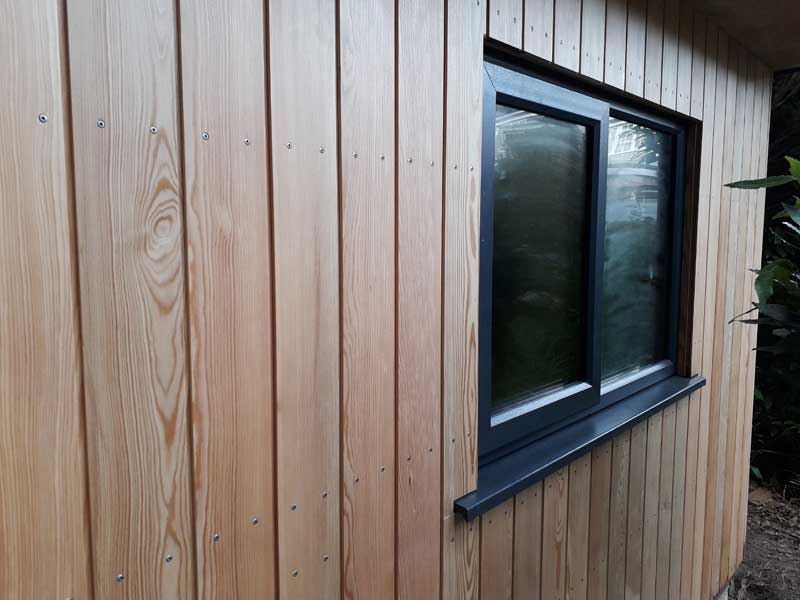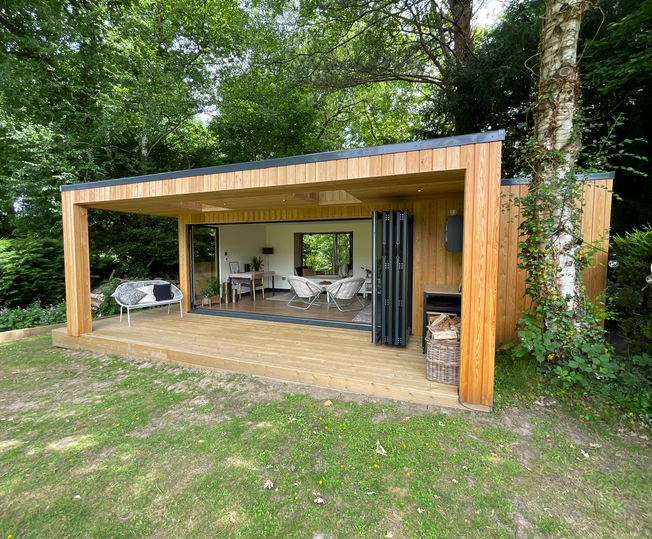Cladding is a great option when you want to protect the outside walls of your house and ensure it stays warm and dry. Cladding is like a special skin for your house that helps keep it safe from the weather. You can use different materials for cladding, like vinyl, steel, aluminum, bricks, or wood. Many people like using wood, especially timber, because it makes their house look nice and strong against the weather. Timber comes from different kinds of trees, and one perfect type of cladding is called Siberian Larch Timber. Let’s discuss why Siberian Larch Timber is a good choice for cladding.
Table of Contents
Siberian Larch Timber
Siberian Larch is a kind of wood that mostly grows near Finland and extends to central Siberia. Its name comes from where it grows. This type of wood can handle very cold temperatures, so it’s called frost-resistant. Because it grows in really cold places, it grows very slowly. But this slow growth gives it special qualities that make it great for outdoor projects, like covering the outside walls of buildings.
Durability
When selecting cladding material, durability reigns supreme. Given the hefty investment involved in installation, it’s crucial to factor in the lifespan of your chosen product. Nothing stings quite like discovering rot or unsightly splits, which may necessitate the removal of substantial sections of boards for replacement. Take the time to choose wisely to safeguard your investment for the long haul.

Aesthetic Appeal
Siberian Larch boasts a remarkably smooth texture, making it sought after for its desirable finish. Initially, when harvested, it exhibits a creamy to golden-yellow hue. Over time, if left untreated, this color transforms into a striking silver-grey tone. Additionally, the tight growth rings of the timber contribute to its appeal, imparting distinctive patterns and shapes to each cladding panel, lending them a unique character.
Longevity
Siberian Larch is a really tough type of wood. It’s super dense, like, really packed in there, with a density of about 590-650kg/cm3. That makes it even harder than Scots Pine, which is already pretty tough. Because it’s so dense, it’s great for use on the outside of buildings, like for walls and stuff. Plus, it’s got this natural resin in it that keeps it from rotting or falling apart, which is awesome. And unlike some other kinds of wood, it doesn’t get messed up easily by scratches or bumps, so it stays looking good for ages.
Good Workability
Even though you might guess otherwise, Siberian Larch might seem like a hardwood to handle because it’s strong, dense, and resistant to scratches. But it’s quite easy to work with! You can cut it, drill holes in it, glue pieces together, and shape it without much trouble. That’s why it’s not just useful but also efficient for tasks like putting on outer layers for buildings.
Longevity
Siberian Larch, when taken care of properly, can last for more than 50 years. But if you don’t treat it right, it might only last between 30 to 50 years. If you decide to use treated Siberian Larch for your outer covering, it’s suggested that you redo the finish every 3 to 4 years at least. However, this can be expensive over time. That’s why simpler maintenance covering options have become more popular over the years.
Maintenance
Using Siberian Larch in your project means you’ll need to take care of it quite a bit. It has a resin that naturally keeps it safe from rot and decay to some extent, but you might notice it wearing down differently in various spots. To keep it looking good and lasting longer, it’s a good idea to treat it regularly. Doing this will stop it from weathering quickly and prevent problems caused by bad weather
Sustainability
When you’re choosing materials to cover buildings that are good for the environment, Siberian Larch stands out. A lot of architects and builders believe it’s one of the best options if you want to be eco-friendly compared to other choices.
Concerns about Siberian Larch Timber Cladding
Here are some Potential Concerns
- Initial Cost: One common concern with using high-quality timber like Siberian Larch is the initial cost compared to other cladding materials. However, it’s essential to highlight the long-term value of Siberian Larch Timber. While the upfront cost may be higher, its durability and longevity can result in lower maintenance and replacement costs over time, making it a cost-effective choice in the long run.
- Maintenance Requirements: Another concern is the maintenance required to keep Siberian Larch Timber looking its best. You can address this by emphasizing the minimal maintenance needed compared to other materials. Additionally, providing tips for proper maintenance, such as regular cleaning and reapplication of finishes, can help readers feel confident in their ability to care for their cladding effectively.
- Availability: The availability of Siberian Larch Timber may be a concern for some readers, especially if they are located in regions where it’s not commonly stocked. You can address this by providing information on suppliers or distributors that offer Siberian Larch Timber in their area. Additionally, highlighting its popularity and widespread use in construction projects globally can reassure readers of its accessibility.
- Environmental Impact: While Siberian Larch Timber is considered sustainable, readers may still have concerns about its environmental impact. You can address this by providing information on the responsible harvesting practices used to source Siberian Larch Timber, such as selective logging and reforestation efforts. Highlighting its low carbon footprint compared to alternative materials can also emphasize its eco-friendly credentials.
- Resistance to Pests and Decay: Some readers may be concerned about the susceptibility of Siberian Larch Timber to pests or decay over time. You can address this by emphasizing its natural resistance to rot and decay due to its high resin content. Additionally, highlighting any treatments or preservatives available to further enhance its durability can provide reassurance to readers.
Comparative Analysis
Here’s a comparative analysis of Siberian Larch Timber with other popular cladding materials:
When considering cladding options for your home or building, it’s crucial to weigh the advantages and disadvantages of Siberian Larch Timber against other popular materials such as vinyl, steel, and brick.
Cost-Effectiveness
- Siberian Larch Timber: While Siberian Larch Timber may have a higher upfront cost compared to materials like vinyl, it offers long-term cost-effectiveness due to its durability and minimal maintenance requirements. Although initial investment may be higher, savings in maintenance and replacement costs over time make it a financially wise choice.
- Vinyl: Vinyl cladding typically has a lower initial cost than Siberian Larch Timber. However, it may require more frequent replacement due to issues such as fading and warping, leading to higher long-term expenses.
- Steel: Steel cladding is often more expensive upfront than Siberian Larch Timber but may offer superior durability and resistance to pests and weather damage, potentially offsetting long-term maintenance costs.
- Brick: Brick cladding tends to have a higher initial cost and requires skilled labor for installation, making it one of the more expensive options. However, its longevity and minimal maintenance needs can provide value over time.
Environmental Impact
- Siberian Larch Timber: Siberian Larch Timber is a sustainable choice, as it is sourced from responsibly managed forests and has a low carbon footprint. Its natural durability reduces the need for frequent replacement, further minimizing environmental impact.
- Vinyl: Vinyl production involves the use of fossil fuels and toxic chemicals, making it less environmentally friendly compared to timber. Additionally, vinyl is not biodegradable and can release harmful substances when exposed to fire.
- Steel: While steel is recyclable, its production process generates significant carbon emissions. Additionally, steel cladding may require coatings or treatments to prevent corrosion, which can have environmental implications.
- Brick: Brick is a natural and durable material with minimal environmental impact during its lifespan. However, its production process involves energy-intensive kiln firing, contributing to carbon emissions.
Durability
- Siberian Larch Timber: Siberian Larch Timber is renowned for its natural durability and resistance to rot, decay, and pests. With proper maintenance, it can last for decades, providing long-term protection and aesthetic appeal.
- Vinyl: Vinyl cladding is susceptible to damage from extreme weather conditions, such as hail and high winds. It may also fade or become brittle over time, requiring replacement.
- Steel: Steel cladding is highly durable and resistant to fire, pests, and rot. However, it may be prone to corrosion in certain environments, necessitating protective coatings or treatments.
- Brick: Brick cladding is exceptionally durable and can withstand weathering, moisture, and pests. It requires minimal maintenance and can last for centuries without significant deterioration.
Final Words
If you’re a homeowner searching for a good siding material that lasts a long time, looks nice, and is affordable, Siberian Larch could be just what you need. It’s strong, lasts a long time, and looks great. Just keep in mind, that you’ll need to spend some time and money taking care of it.


